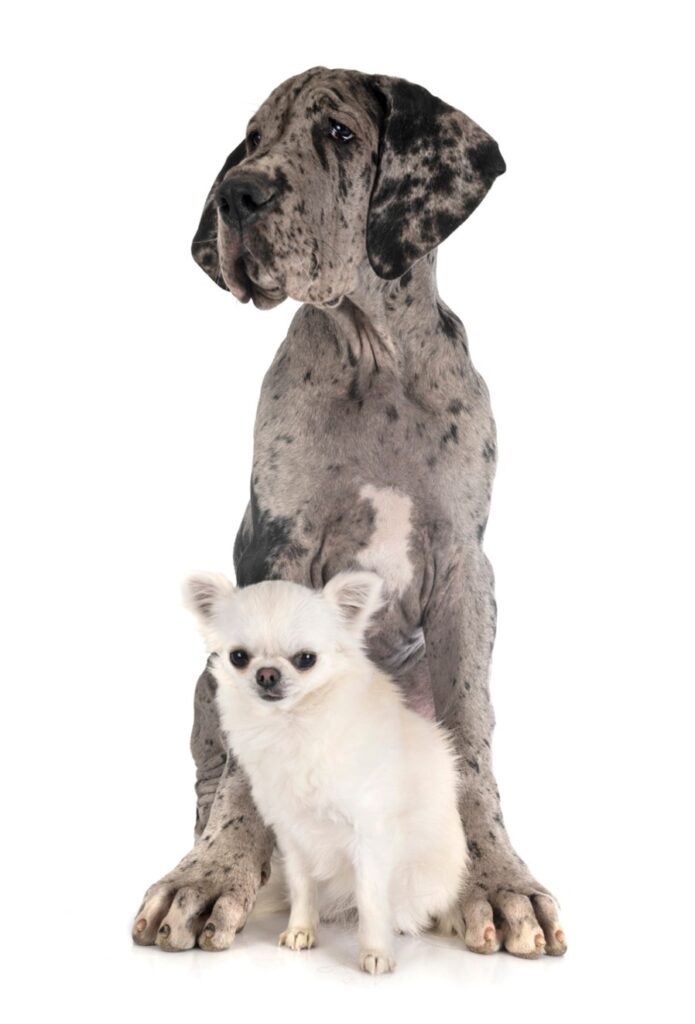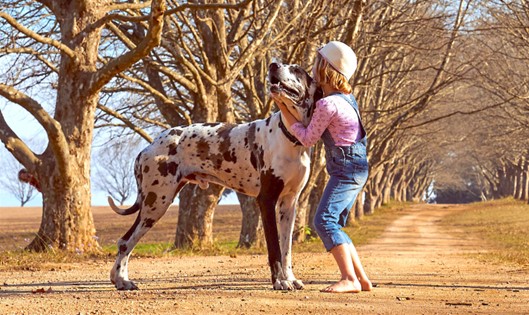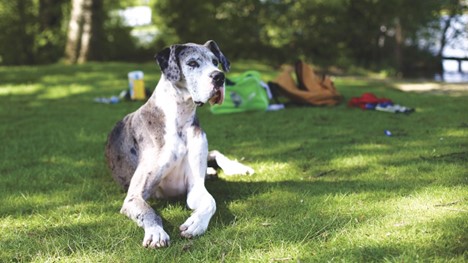
Great Danes are gentle giants, and one of the ways they communicate with their owners is through their body language. Below are discussed some of the ways a Great Dane communicates.
Great Danes can show their love and affection through eye contact, and physical contact such as leaning into someone and wagging their tails. They might also communicate to their owners when they are stressed by yawning or panting and show off their gentle side by rolling over and revealing their bellies during play, according to Devin Harris of Joplin MO.
The Long Stare
If a Great Dane stares at its owner, it usually wants something. It could be a tasty treat or perhaps they just want attention.
Feel free to stare back into those loving puppy-dog eyes, but remember not to stare for too long, or else it might come across as a little threatening.
Squinting and Blinking
Narrowed eyes and rapid blinks can often mean that a Great Dane is having a good time, especially if they are enjoying a good head scratch. However, if this happens often without positive stimuli, then it’s worth taking a visit to the vet in case there are any underlying issues.
Leaning on Someone
For the biggest dog breed out there, Great Danes are notorious leaners! They enjoy resting their weight against people that they love and trust, almost as if they are unknowing of their size.
For owners that can bear the weight, giving them some gentle love and assurance can be all they need at that moment.
Tail Wagging
Most people know that the sign of a happy dog is usually a waggy tail. But there are different ways that a Great Dane can wag to communicate different feelings to its owner.
For example, a slow, lowered wag can indicate playful anticipation, and a tail that is going crazy like a helicopter signifies they are probably having a whale of a time!
Showing their Belly
A dog showing its belly is a submissive behavior, as it is exposing one of the most vulnerable parts of its body.
A Great Dane might do this if they feel threatened, but it is more likely something it will do during play. This can be particularly humorous when they submit to a smaller dog.

Yawning
Yawning can mean the obvious, but it is also something that they and other dogs will do when they are stressed, especially if this is accompanied by a lot of panting.
If an owner notices this behavior, it is worth reviewing the surroundings to see if there is anything that might be distressing their pooch, such as a busy environment, new smells, or sudden changes within the household (a new baby, perhaps?).
Shaking it Out
One way to tell whether a Great Dane is starting to feel relaxed is if they shake themselves out much in the way that they might do after a bath.
This is almost like their way of resetting themselves ready for the next activity and can occur to get rid of strong emotions such as pent-up excitement from play, or nerves from a stressful situation. If a Great Dane does this it means they are chilled out, and ready for whatever its owner throws at them next (hopefully the ball!).



